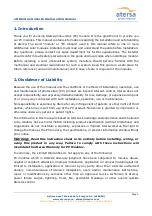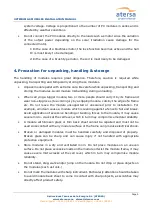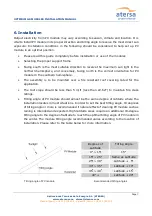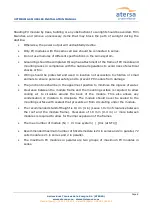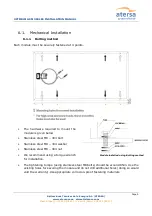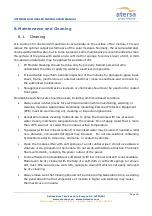
OPTIMUM GS MODULES INSTALLATION MANUAL
Page 4
Aplicaciones Técnicas de la Energía S.L. (ATERSA)
www.atersa.com – atersa@elecnor.com
Madrid (Spain) +34 915 178 452 - Valencia (Spain) +34 961 038 430
3.
General Safety
•
Follow all permission, installation and inspection requirements.
•
Before installing modules, contact the appropriate authorities to determine
permissions, installation, and inspection requirements which should be followed.
•
Electrically ground modules for all systems of any voltage.
•
If not otherwise specified, it is recommended that requirements of national or
international electrical standards be used.
•
Be sure that the construction or structure (roof, facade, etc.) where the modules are
being installed has enough strength. For modules mounted on roofs, special
construction or structures may be required to help provide proper installation. Both
roof construction and module installation design have an effect on the fire resistance of
a building. Improper installation may contribute to fire hazards. Additional devices
such as ground fault, fuses, and disconnects may be required.
•
Follow all safety precautions of other system components used.
•
Wiring and grounding method of the frame of arrays shall comply with national,
regional and local codes, laws and standards.
•
PV modules should be installed and maintained by qualified personnel. Only
installation/service personnel should have access to the PV module installation site. Do
not work alone (always work as a team of 2 or more people)
•
Keep children and animals away from PV modules.
•
Prior to installation, do not store modules outdoors or in a damp environment.
•
When PV modules are installed on roofs or any other structures above ground,
appropriate safety practices should be followed and appropriate safety equipment
should be used in order to avoid possible safety hazards. Note that the installation of
PV modules on some roof types may require the addition of fireproofing, as required by
local building/fire codes.
•
Follow all safety precautions of other components used in the system.
•
In order to avoid risk of injury or electrical shock, do not allow anyone (unqualified or
having limited knowledge of PV modules) to handle damaged PV modules. Place
defective PV modules in cartons so that PV cells are completely shaded.
•
Avoid uneven shade on the PV module surface. Shaded cells may become hot (“hot
spot” phenomenon) which may result in permanent damage to the module.
•
Do not expose PV modules to sunlight concentrated with mirrors, lenses or other
means.
•
The maximum open circuit voltage must not be greater than the specified maximum



